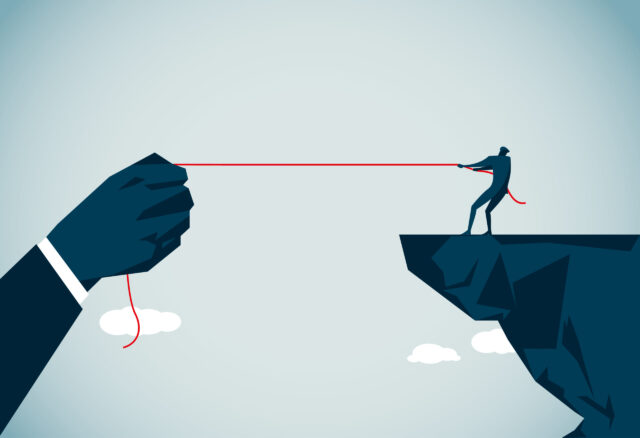
Just like water, electricity, and sewage, the cable is a quintessential commodity. Consumers have been investing in cable TV ever since its inception; so much so that it is has become a part of the average American lifestyle, and acquired unequivocal importance over time.
Even though streaming services have appeared in the recent era, they still haven’t been able to topple over cable companies or shake the grip these giants have on the hearts of American consumers.
Statistics show that around 60% of the current US households continue to hold on to their pay-tv, despite having two to three streaming service subscriptions alongside.
This proves that cable TV is a hard-to-beat industry. Read more here regarding the beneficial offerings of a top cable provider. It is due to these amenities and the never-ending hype that consumers sign up for their nearest cable company, only to find themselves caught in a web of lies with the passage of time. Yes, cable companies maintain a monopoly in the market. They do as they please, and consumers have no choice but to go with the flow even if they are unhappy with the experience.
Why is that? Why is the cable distribution business so uncompetitive? What does this monopoly entail? And, how can it be curtailed? Let’s explore these mysteries below.
Why is Market Competition Important for Consumers?

Market competition indicates a healthy economy. It pushes sellers to do better and innovate for the sake of gaining an edge in the market. On the other hand, it keeps the buyers happy with services, offers, and prices that gravitate towards their interests.
Though market competition has its limitations, this model generates more customer satisfaction than any other, since the scales are tipped towards buyers in this case.
Whereas, in a monopoly, the sellers control the metrics of progress and engineer their services to fulfill their interests i.e. profit maximization. They don’t require their customers to be happy, because they know that due to the lack of options or competitors available, the subscribers have no choice but to stick with their plans. This is why market competition is important for all consumers.
What are the Reasons for the Lack of Cable Competition?
Unfortunately, for us, the cable market resembles a monopoly more than a competition. Here are the top reasons why the cable distribution system is so uncompetitive:
1. Sole Investment in Infrastructure

Cable service requires laying down an expensive infrastructure in an area. Not every company is willing to invest in such monumental capital. This leaves only a few risk-taking enterprises in the equation, who have the resources to install cables across localities of their choosing. And, when they do, no one else deems it wise to build a second-generation network in the same region, as that would lead to lesser profits.
So, this leaves consumers with only one to two cable companies in their locality. For market competition to work, several overlapping networks would be needed, which is not the case with the current cable distribution business in the US.
2. Domino Effect of Marginal Cost

Domino effect means a chain reaction. Let us explain. When a cable company installs a cable infrastructure in an area, the cost for that venture is known as the “fixed cost.”
However, once the cables network is set up, the company delivers cable TV service through it, and the cost for that service distribution is called a “marginal cost.”
For the first company that enters a new area, the marginal cost would be lower than the fixed cost but more than enough to meet the breakeven point. If a second company appears in the same neighborhood, its fixed cost would be the same as the first one’s, but its marginal cost would be 2x lower than the marginal cost of the first company because the business would have to show consumers that its offerings are cheaper to entice them.
The third company would have it worst, with its marginal cost 3x lower and the fixed cost hovering at the same expensive rate. It would never be able to reach breakeven! Thus, scared of the domino effect, it would steer clear of the area, leaving the first company to reign supreme.
3. Multiplicity of Services

The moment cable companies took on to deliver broadband and landline over their networks in addition to television; they sealed their monopoly in the market. How? Let’s understand this through an example. Suppose you’ve moved to a remote suburb and now, you’re looking for the trinity, i.e. cable, internet, and phone. There are separate providers for internet and phone in your area. You could go for their offers. Instead, you’re inclined to pick a triple play bundle from a cable company near you, because it’s providing you three services under one bill and at discounted rates, or so you think.
Once you do this, you only strengthen the monopoly of cable companies in your market.
They may give you promotional pricing and delectable freebies, but they take more in return, in the shape of higher subscription fees, poor customer service, and discriminatory prices for rural & urban residents. This is an unavoidable outcome of the cable distribution system’s uncompetitive streak.
What Should Be Done About It?
There is always a way to break monopolies, as evident from human history. Here are a few possible suggestions:
- Competitive Pressure – Governments can fund alternative companies to enter the arena, put pressure on cable giants, and directly challenge their market monopoly. The authorities can also promote competition by building urban fiber networks or investing in newer technology like 5G in favor of consumers.
- Governmental Regulation – Governments and FCC can also regulate the rising cable rates through price caps, making it necessary for cable companies to have their price increases approved by these regulatory authorities. Moreover, regulators can also monitor and impose customer care standards on cable companies to ensure customer satisfaction.
- Penalties for Abuse – In addition to regulation, governments and FCC can put penalties on cable companies for abusing their monopolies, thus relieving customers from the asphyxiating experience.
The Bottom Line
It is true that the cable distribution business thrives on monopoly. Its uncompetitive nature is a direct result of the lack of capital investment and other reasons mentioned above. Consumers can either wait it out or plead to their local governments to push the monopoly into a competition, so everyone can go home happy.












